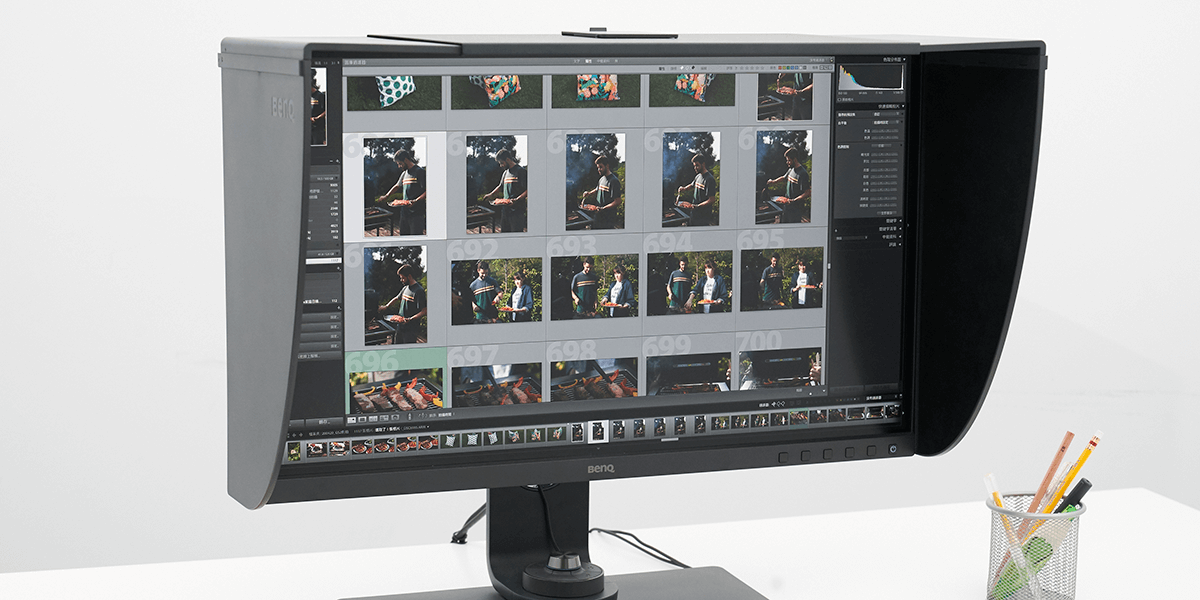Projector
Monitor
Lighting
Digital Display
Job References
Although color rendering, resolution, and color management are key factors of a professional monitor, retouching and post-editing can be more convenient and efficient if these factors were assisted by user-friendly designs or functions. For example, some of the latest professional monitors support two-gamut or black and white modes, some models feature revolutionized monitor controls, and some are accessorized with hoods. However, can these features truly enhance work efficiency? The answer lies in this article.

We all know that the most common color spaces used by photographers are Adobe RGB and sRGB. Since Adobe RGB encompasses almost the entire CMYK color space applied in commercial printing, Adobe RGB compatibility is the principal factor for photographers when choosing a monitor. Commonly, in order to be capable of rendering true-to-life colors, a professional monitor should at least support 99% of the Adobe RGB color space. However, unless printing out or commercial application is required, most photographic works are shared with friends and family on a computer or over the internet. For that purpose, the sRGB color space can satisfy photographers. For photographers who need to share works on the internet and print their works, a monitor with GamutDuo will enable them to simultaneously preview their works in Adobe RGB and sRGB with the push of a hotkey (and only when the camera is set in Adobe RGB mode). Otherwise, they are required to manually change the color space in post to compare their photos. The difference in work efficiency of the two processes is evident. For a team or in a studio, the GamutDuo function allows them to browse the works of different photographers, enable the team or clients to compare photos in different color spaces and share/print the differences, thereby facilitating subsequent tasks.
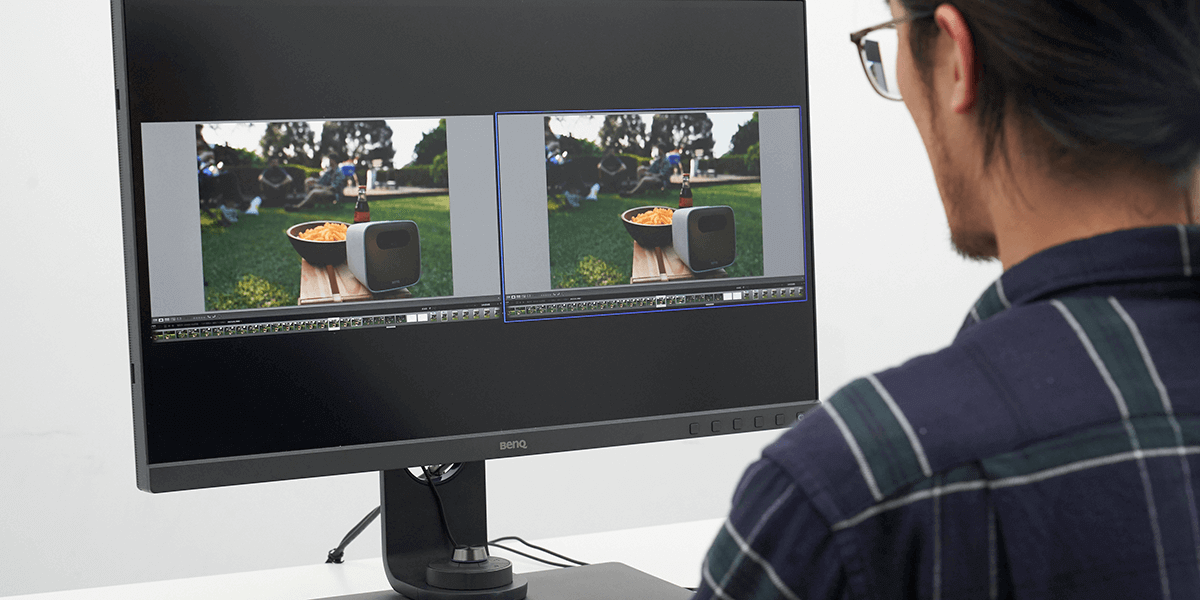
The GamutDuo function allows users to simultaneously view the effects of a photo in two different color spaces.
In addition to two-gamut functionality, some professional monitors also support black and white mode. This mode is relatively self-explanatory, as it is about applying the black and white effect. The main function of this mode is to present color photos in black and white, allowing users to rapidly view the differences between the color and black and white versions of an image before editing. As many commercial photographers have already experienced, they have to constantly convey their expectations of the end products during a photo shoot, and sometimes they even have to repeatedly assess and discuss the color and black and white versions. However, camera sensors record data in color. Photographers can freely switch between the color version or the black and white version of the photo while in black and white mode, allowing clients to quickly view the photograph in both versions. Once a confirmation is received, the photographer can then use post-editing software to convert the photo into greyscale. The black and white mode has another surprising function, which is the ability to make black and white photos more true-to-life. Generally, black and white photos that are shot or post-edited by photographers seem “flat” when displayed on a color monitor. Viewing them in black and white mode can enhance the intrigue of the photos.

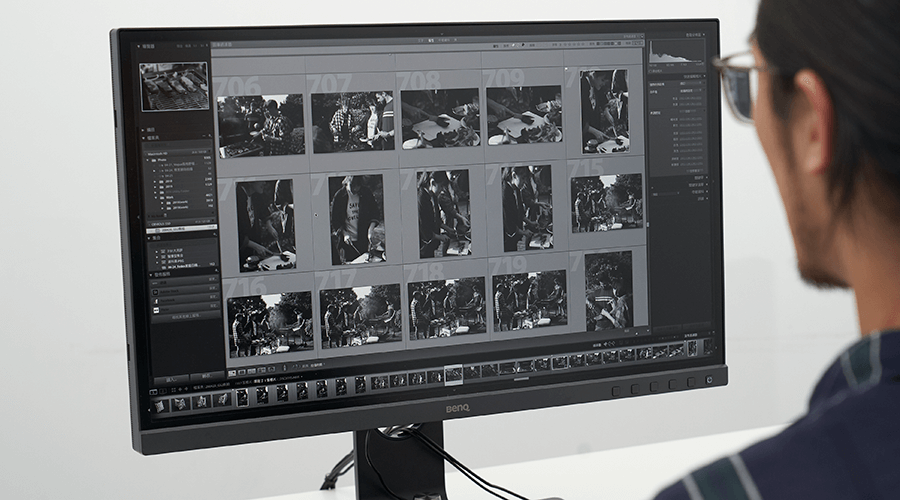
The monitor’s black and white function allows users to preview photos in color and black and white in real time, facilitating subsequent tasks.
High dynamic range (HDR) is a familiar phrase in the world of photography. It refers to taking three photos consecutively, one overexposed, one normally exposed, and one underexposed. The three photos are then overlapped to create an HDR photo. Did you know that now monitors are also equipped with HDR? Different to HDR in photography, monitor HDR is a new specification. With the latest compression technologies, the brightness and tones of the screen are completely sampled to ensure that the light and dark details of an image are retained. Compared to conventional standard dynamic range (SDR), the colors and effects presented through HDR monitors are more natural and true-to-life. Post-editing on professional monitors with HDR functionality enables photographers to clearly view and edit images in greater detail and maximize the potential of RAW files, consequently perfecting their craft. However, it is worth noting that although computer monitors support HDR effects, some software, such as Adobe Photoshop and Lightroom, do not support similar editing environments currently. Therefore, the utility of HDR mode depends on the software being used.

A computer monitor with HDR mode is capable of presented photos perfectly.
In the past, changing the settings of a monitor requires users to press buttons at the bottom or on the right of the screen. Users have poor experiences operating such designs. Buttons are often too small and difficult to press, and buttons must be repeatedly pressed to achieve the desired settings. These designs can’t meet ergonomic standards. Luckily, these designs have been greatly improved on some professional monitors, offering users standalone controllers (Hockey Puck) to quickly and conveniently set their monitors. Also, many custom buttons are designed on these controllers, allowing photographers to assign their preferred functions, such as GamutDuo, black and white mode, HDR, or other OSD settings, greatly improving the speed and convenience of post-editing.
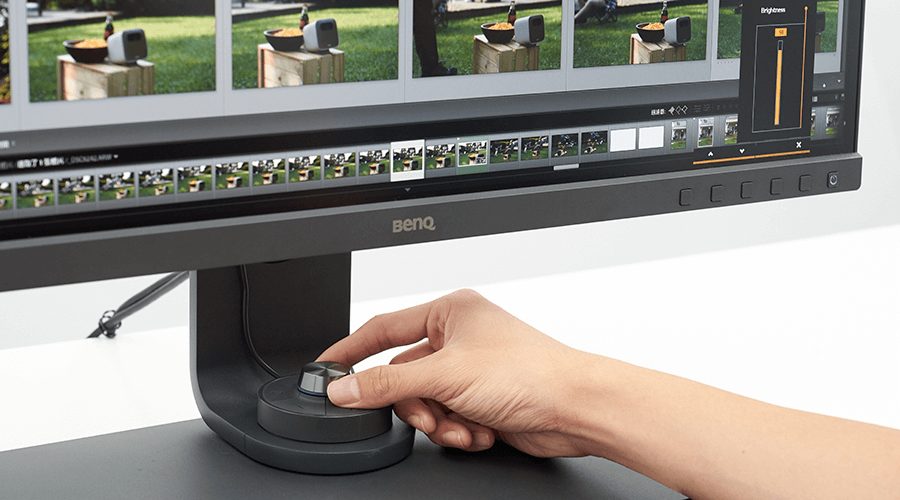
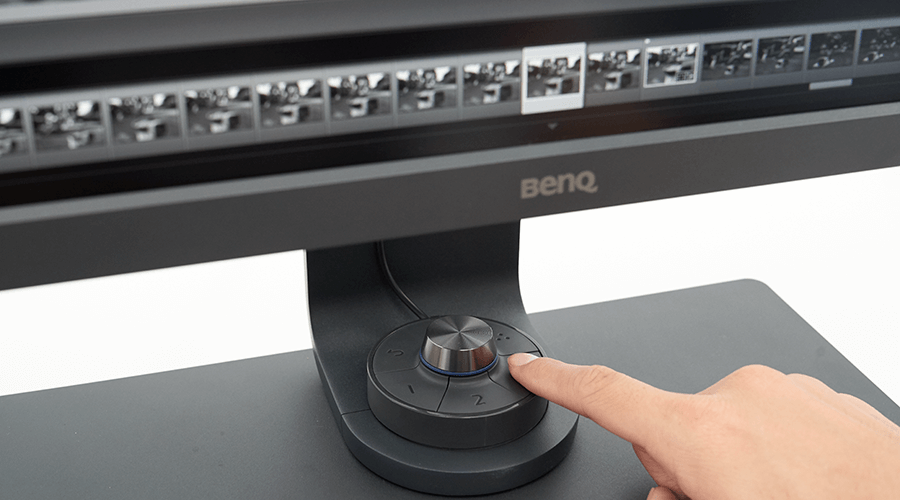
Smart controllers not only allow users to conveniently operate their monitors but also offer custom buttons to enhance efficiency.
Many users may wonder what the purpose of a monitor hood is. The answer is relatively simple. Smartphone and camera displays are sometimes difficult to see under strong light. This is also a problem for computer monitors. Although glare may not be as big of a problem for indoor monitors than those on smartphones and cameras, monitors may coincidently be next to a window or under a strong light source in the workplace or studio. In these situations, environmental light may affect the selection or editing of photos. A number of professional monitors are equipped with a detachable hood. Once installed, the hood not only reduces glare from environmental lighting but also prevents strong light sources from affecting photographers’ color grading perceptions and judgments, facilitating the output of professional works with utmost color accuracy.
